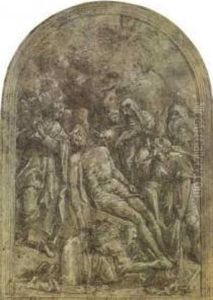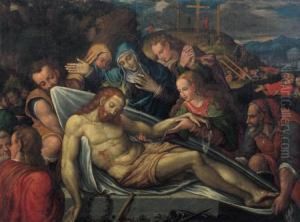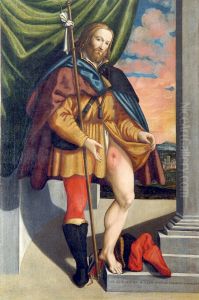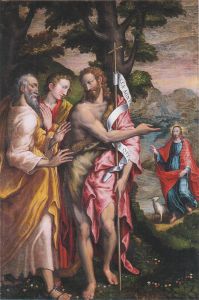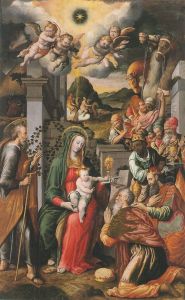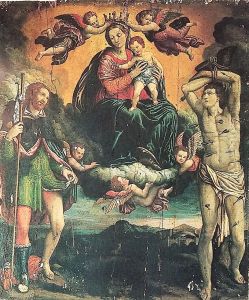Ercole Ramazzani Paintings
Ercole Ramazzani was an Italian painter born in 1565 in Novilara, a small town in the region of Marche, Italy. Little is known about his early life or training, but Ramazzani emerged as a notable artist in the late Renaissance period, contributing to the development of 16th-century Italian art. His works are often mentioned in the context of the Mannerist style, characterized by artificiality, elegance, and a departure from the proportional norms established during the High Renaissance.
Ramazzani's artistic career was primarily centered around religious themes, a common focus among artists of his time due to the patronage of the Catholic Church. He was known for his altarpieces and fresco works, which were admired for their vibrant coloration, detailed landscapes, and the emotional expressiveness of the figures. Despite his relatively short life, Ramazzani managed to leave a mark on the art world through his contributions to various churches and public buildings in Italy.
Among his notable works is the altarpiece in the church of San Francesco in Urbino, which showcases his ability to blend spiritual themes with the physical beauty of the natural world, a hallmark of Renaissance art. His style, while primarily Mannerist, also showed the influence of other contemporary movements and artists, incorporating elements that would pave the way for the Baroque period.
Ercole Ramazzani’s career was cut short when he died in 1598, at the age of 33. Although his body of work is not extensive, his contributions to Italian art have been recognized by art historians who appreciate the depth and complexity of the Mannerist period. Ramazzani's works continue to be studied for their technical skill and the unique blend of emotional expressiveness and Renaissance idealism.
